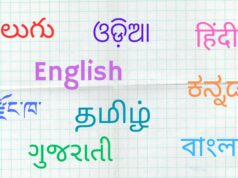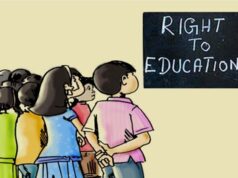We know markets lead to innovation, increased quality, and falling costs. Freedom is the sin qua non of innovation in every sector. If someone thinks she can do a better job, she should be free to try. The market will sort those that really do do better from those that don’t and channel resources to the more successful enterprises.
Some complain that you can’t compare cell phones with schooling. Yes, of course, cell phones and computers are different from education. Yet there is something essentially the same about them: they are provided by fallible human beings. Does anyone doubt that there are ways in which education can be improved? Does anyone doubt that some individuals have more knowledge and better insight into pedagogical methods and managerial practices than others? Competition is not just the pressure to do better than others to keep your customers. It is also the process of trial and error and selection of variations that offer improvement. A free market means the freedom to provide alternatives in competition with established players and the freedom for consumers to choose among available options. As the Noble Prize winner F. A. Hayek argued, the primary value of competition is the role it plays as a discovery procedure.
However, despite the clear rationale and ample experience in different sectors, people doubt the power of freedom and competition to deliver the goods. Thankfully, there is a case study that gives powerful evidence that the same logic that leads to improvement and falling costs in every other sector also applies to education. Sweden has employed a universal voucher system since 1992. Although the state funds every student’s education with tax funds, entrepreneurs are free to compete for those funds and families are free to choose where they send their children to school.
In an interview about Sweden’s experience with universal school choice system (here) Thomas Idergard, Program Director of Welfare and Reform Strategy Studies at Timbro, a free-market think tank based in Stockholm comments:
“Since the 1970s, the Swedish school system had declined regarding quality and student attainment. One reason for this was the lack of choice. Only the very rich, who could afford private schools with private tuition fees on top of our very high taxes, had a right to choose. For all the rest, the school was one monolithic organization in which all students were considered to have the same needs and to learn the same way. The lack of choice created a lack of innovation regarding pedagogical concept and ways of learning adapted to different students’ needs. Public schools, run by politicians in the local branch of government (cities and municipalities), were all there was for 99 percent of all students.
“The school voucher program was designed to create a market—with competition, entrepreneurship, and innovation—based on the Swedish and Scandinavian tradition of social justice and equality: All families should be able to choose between public and private schools regardless of their economic status or wealth. This equal opportunity philosophy, taken into its full potential, created an education market!…
“Through our universal school choice model, we combine the social dimension (taxpayer money should fund education for all) with the principles of the free market: The clients’ choices decide how the funding should be distributed and providers compete for clients’ satisfaction, which is ultimately materialized in concrete educational results, in order to get their revenues.”
Read the whole interview here.
Post Disclaimer
The opinions expressed in this essay are those of the authors. They do not purport to reflect the opinions or views of CCS.






